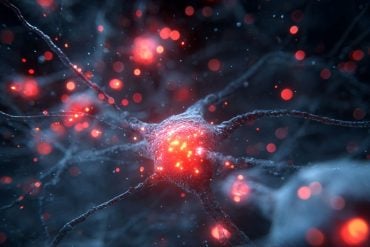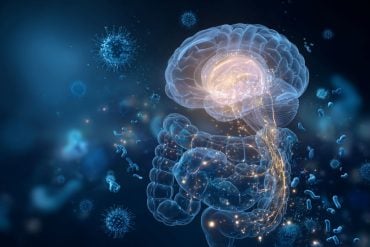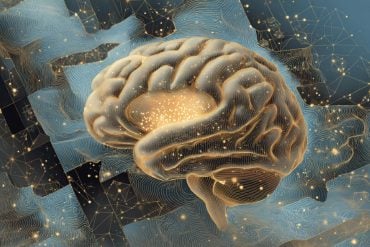Summary: Findings from a new study shed light on how genes predispose some to becoming obese and increase diabetes risks.
Source: University of North Carolina at Chapel Hill.
A new breakthrough from the Genetic Investigation of Anthropometric Traits consortium, which includes many public health researchers from the University of North Carolina at Chapel Hill, identifies multiple genetic variants associated with how the body regulates and distributes body-fat tissue. The new findings broaden the understanding of how genes can predispose certain individuals to obesity.
The GIANT Consortium is a major international collaboration of more than 275 scientists that seeks to identify genetic sites that affect human body size and shape, including height and measures of obesity.
Kari E. North, professor of epidemiology at the University of North Carolina at Chapel Hill Gillings School of Global Public Health, is joint lead author of the new study, “Protein-Coding Variants Implicate Novel Genes Related to Lipid Homeostasis 1 Contributing to Body Fat Distribution,” published February 18 in Nature Genetics.
Other co-authors from the UNC Gillings School include assistant professor Kristin Young, assistant professor Misa Graff, and postdoctoral fellow Heather Highland, all in the UNC Gillings School’s department of epidemiology.
Identifying the genetic variants associated with obesity is central to developing targeted interventions that can reduce the risk of chronic illnesses, such as hypertension, type 2 diabetes, and heart disease, to which obesity contributes in significant ways. Genome-wide association studies previously identified 49 loci, or positions along a chromosome where the related genetic variants are located, that predispose individuals to a higher waist-to-hip ratio, which is a way to assess body-fat distribution. Lower values of WHR are associated with lower incidence of these diseases.
In this study, with a specific focus on coding variation, the team found 24 coding loci — 15 common and nine rare — along the chromosomes of individuals that predispose to higher WHR. Further analysis revealed pathways and gene sets that influenced not only metabolism but also the regulation of body fat tissue, bone growth and adiponectin, a hormone that controls glucose levels and breaks down fat.
The team also performed functional studies across other organisms and identified two genes that were associated with a significant increase in triglyceride levels and body fat across species.

“For the first time, we were able to examine, on a large scale, how low-frequency and rare variants influence body fat distribution,” said Kari E. North. “These variants are rarer in the population, but the effects they have on individuals are much larger, possibly making them more clinically relevant.”
Another major finding from this study is the importance of lipid metabolism to bodyfat distribution, which could lead to a better understanding of how obesity causes downstream diseases such as Type 2 diabetes and cardiovascular disease.
“A better understanding of the genetic underpinnings of body fat distribution may lead to better treatments for obesity and the cascade of downstream diseases obesity also impacts, for example type 2 diabetes and heart disease” North said.
Source: University of North Carolina at Chapel Hill
Publisher: Organized by NeuroscienceNews.com.
Image Source: NeuroscienceNews.com image is in the public domain.
Original Research: Abstract for “Protein-coding variants implicate novel genes related to lipid homeostasis contributing to body-fat distribution” by Justice et al. in Nature Genetics. Published February 18 2019.
doi:10.1038/s41588-018-0334-2
[cbtabs][cbtab title=”MLA”]University of North Carolina at Chapel Hill”DNA Variants Significantly Influence Body Fat Distribution.” NeuroscienceNews. NeuroscienceNews, 18 February 2019.
<https://neurosciencenews.com/genetics-body-fat-distribution-10765/>.[/cbtab][cbtab title=”APA”]University of North Carolina at Chapel Hill(2019, February 18). DNA Variants Significantly Influence Body Fat Distribution. NeuroscienceNews. Retrieved February 18, 2019 from https://neurosciencenews.com/genetics-body-fat-distribution-10765/[/cbtab][cbtab title=”Chicago”]University of North Carolina at Chapel Hill”DNA Variants Significantly Influence Body Fat Distribution.” https://neurosciencenews.com/genetics-body-fat-distribution-10765/ (accessed February 18, 2019).[/cbtab][/cbtabs]
Abstract
Protein-coding variants implicate novel genes related to lipid homeostasis contributing to body-fat distribution
Body-fat distribution is a risk factor for adverse cardiovascular health consequences. We analyzed the association of body-fat distribution, assessed by waist-to-hip ratio adjusted for body mass index, with 228,985 predicted coding and splice site variants available on exome arrays in up to 344,369 individuals from five major ancestries (discovery) and 132,177 European-ancestry individuals (validation). We identified 15 common (minor allele frequency, MAF ≥5%) and nine low-frequency or rare (MAF <5%) coding novel variants. Pathway/gene set enrichment analyses identified lipid particle, adiponectin, abnormal white adipose tissue physiology and bone development and morphology as important contributors to fat distribution, while cross-trait associations highlight cardiometabolic traits. In functional follow-up analyses, specifically in Drosophila RNAi-knockdowns, we observed a significant increase in the total body triglyceride levels for two genes (DNAH10 and PLXND1). We implicate novel genes in fat distribution, stressing the importance of interrogating low-frequency and protein-coding variants.






